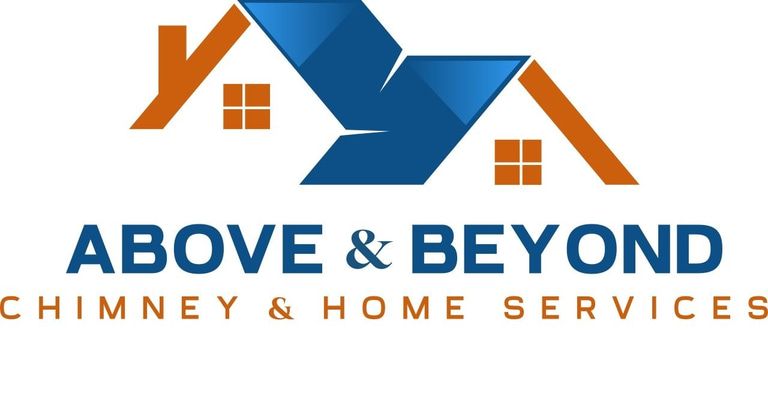Save 15% on Your First Inspection!
Book any type of inspection for the first time and get 15% off using promo code "ABOVE15" at checkout!
Chimney Inspections: Safety and Peace of Mind for Every Home
A fireplace adds warmth, comfort, and charm to any home - but behind that cozy glow, your chimney works hard to vent smoke and gases safely.
Over time, creosote buildup, small cracks, or hidden blockages can turn into serious safety hazards if left unchecked.
That’s why regular chimney inspections are essential.
Our professional team performs detailed inspections that help you catch small issues before they become costly repairs - keeping your home safe, efficient, and ready for the season.
Keep Your Fireplace Safe and Ready
A yearly chimney inspection is one of the simplest ways to protect your home and your family. It helps prevent chimney fires, improve heating efficiency, and avoid expensive repairs down the road.
Our professional team takes pride in providing detailed, honest, and reliable inspections — treating every home with the same care and respect we would our own.
and let our experts ensure your fireplace is safe, clean, and ready for the season ahead.
What Is a Chimney Inspection?
A chimney inspection is a professional evaluation of your chimney’s structure, interior, and components to ensure it’s safe to use. Over time, soot, creosote buildup, cracks, and moisture damage can all create dangerous conditions - sometimes without any visible signs.
A trained technician checks for hidden issues, ensuring your system vents properly, your flue is clear, and your chimney is in good condition.






Level 1: Basic Inspection
This is the most common type — ideal if:
You use your chimney regularly with no major changes or issues.
You haven’t experienced any problems or damage.
What’s included:
A visual check of all accessible parts of the chimney - inside and out - including the firebox, flue, and chimney cap. The technician ensures everything is structurally sound and clear of obstructions.
Recommended once a year for most homeowners.
Level 2: Real Estate or Post-Event Inspection
A more detailed inspection required when:
You’re buying or selling a home.
You’ve changed your heating system or fuel type.
The chimney has experienced a fire, earthquake, or storm damage.
What’s included:
Everything in a Level 1, plus video scanning or camera inspection of the internal surfaces of the flue and a check of the attic, crawl space, or basement where accessible.
This inspection provides a deeper look at areas not visible during a basic inspection.
Often required during real estate transactions.
Level 3: Full Structural Inspection
This is the most comprehensive inspection - typically done when a serious hazard is suspected.
It may involve removing parts of the chimney or surrounding structure to assess hidden damage.
What’s included:
All of Level 1 and 2 checks, plus potential removal of walls, chimney liners, or parts of the structure to identify severe problems like cracks, leaks, or fire damage.
Performed only when a significant issue is found or suspected.
The 3 Levels of Chimney Inspections
According to the National Fire Protection Association (NFPA 211), chimney inspections fall into three levels, depending on your needs and the condition of your system.
Why Chimney Inspections Are So Important
Prevent Chimney Fires
Creosote - a flammable residue - builds up in chimneys with every fire.
Regular inspections catch it before it becomes dangerous.
Avoid Costly Repairs
Small cracks or leaks can lead to big structural problems if left unchecked.
Inspections spot them early, saving you money down the road.
Improve Heating Efficiency
A clean, well-maintained chimney allows your fireplace or stove to burn more efficiently,
providing more heat with less fuel.
Ensure Proper Venting
Blockages can cause smoke or dangerous gases (like carbon monoxide) to enter your home.
Inspections ensure your system vents safely.
Comply with Insurance and Safety Standards
Many insurance companies and home inspectors require a documented chimney inspection for safety and liability reasons.
When Should You Schedule a Chimney Inspection?
You should have your chimney inspected:
At least once a year (even if you don’t use it often).
Before the start of the burning season (fall/winter).
After severe weather like heavy storms, earthquakes, or chimney fires.
Before buying or selling a home with a fireplace.
Keep Your Home Safe
Don’t wait until you smell smoke or see soot — by then, it could already be a serious problem.
A quick, professional chimney inspection gives you peace of mind and helps ensure your fireplace is safe and ready to use.
keep your family safe, your home efficient, and your chimney in top shape all year round.

Schedule an Appointment Today!
Connect
Get in touch for your home service needs.
Follow
Subscribe
© 2025. All rights reserved.
